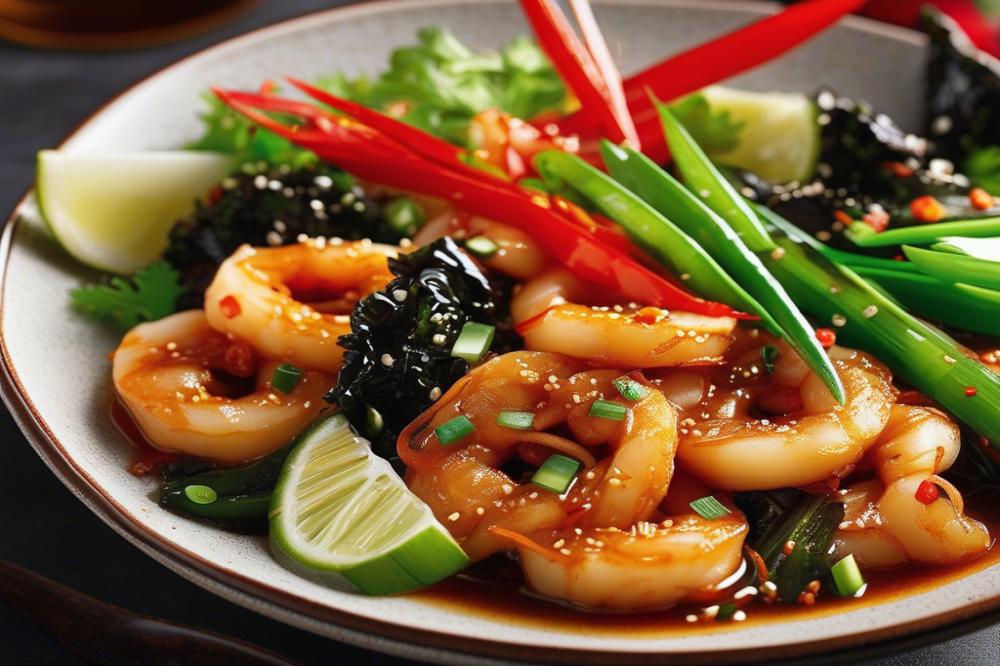Introduction to Ojingeo Bokkeum
Ojingeo Bokkeum is a beloved classic within Korean food. This dish features tender squid, expertly cooked in a spicy sauce that brings out its flavor. It is a seafood dish that many enjoy for its delicious taste and quick preparation. In Korean cuisine, Spicy Stir-Fried Squid holds a special place. It isn’t simply a meal; it represents a vibrant aspect of daily life for many Koreans.
The popularity of Ojingeo Bokkeum is easy to understand. Families often prepare this dish for weeknight dinners, appreciating its simplicity and depth of flavor. Easy meals are essential in busy households, and this squid recipe checks all the boxes. It is both satisfying and quick, allowing cooks of any skill level to shine in the kitchen.
Asian cooking emphasizes bold flavors, and Spicy Stir-Fried Squid illustrates this perfectly. The combination of ingredients creates a savory, piquant dish that excites the palate. Cooking tips can enhance the experience, making it even easier to replicate at home. Using fresh Korean ingredients makes the dish more authentic, adding a special touch that elevates the meal. Overall, Ojingeo Bokkeum is not just a meal; it embodies the love for spice and variety found in Korean cuisine.
Understanding Ojingeo Bokkeum
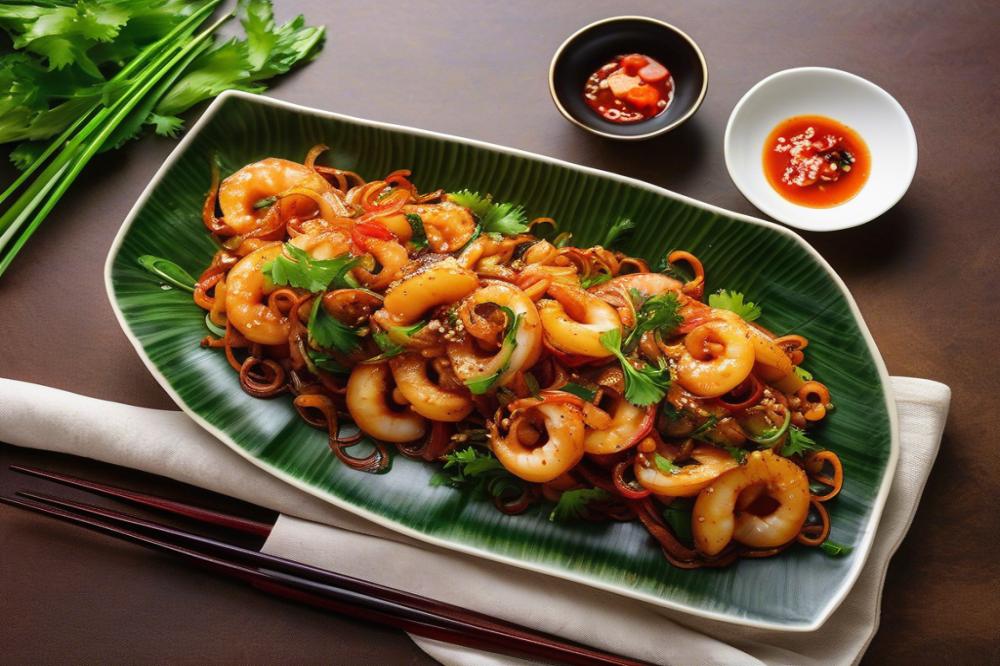
Ojingeo Bokkeum is a popular Korean dish featuring stir-fried squid. It is often praised for its spicy flavor and appealing texture. Many families enjoy this seafood dish as part of their dinner rotation. The vibrant colors and aromas make it a feast for both the eyes and the palate.
This stir-fry stands out among other Korean seafood offerings like Nakji Bokkeum, which uses octopus, and Saengseon Jorim, a fish dish. Each dish has its own charm, but Ojingeo Bokkeum is especially loved for its balance of heat and savory notes. Korean food often highlights fresh ingredients, and this recipe exemplifies that tradition using squid, vegetables, and a spicy sauce.
The ingredients create a robust flavor profile. Common components include gochujang, a fiery red chili paste, which adds depth while providing a kick. Soy sauce brings in umami, enhancing the overall taste. Other vegetables, like bell peppers and onions, contribute sweetness and crunch to the stir-fry, making it a well-rounded meal. Cooking tips emphasize keeping the squid tender. Overcooking can lead to a rubbery texture, which is not desired in a great squid recipe.
In Asian cooking, recipes vary widely, but Ojingeo Bokkeum often shines as a quick recipe. Many consider it easy meals suited for busy weeknights. Using readily available Korean ingredients helps home cooks whip up this delicious dish with minimal preparation.
Ingredients List and Cooking Instructions
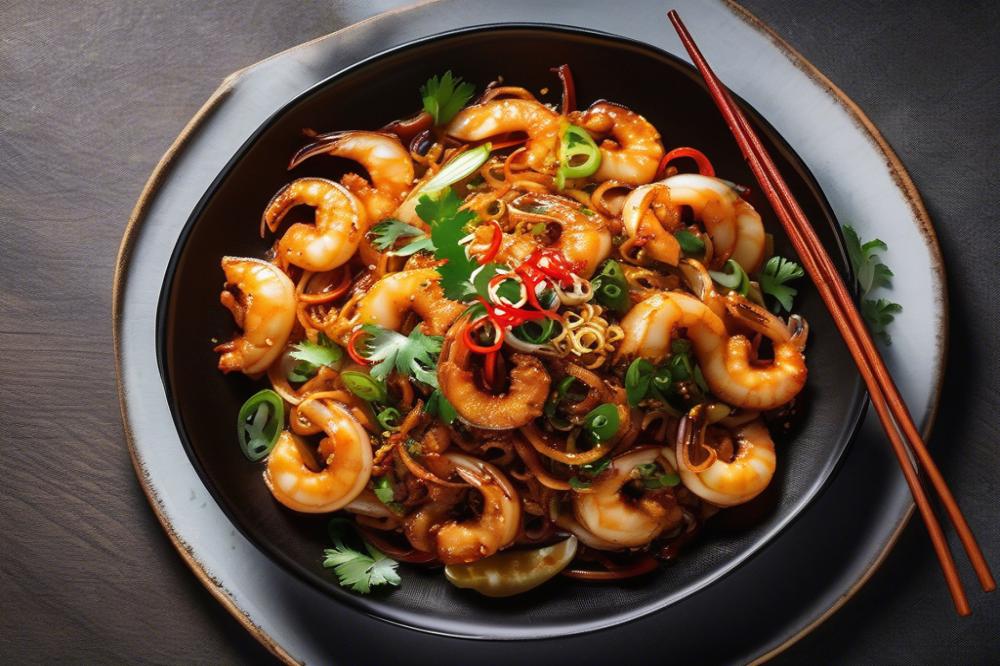
Ingredients
- Fresh squid (600g)
- Green onion (2 stalks)
- Garlic (4 cloves)
- Red chili pepper or gochugaru (2 tablespoons)
- Soy sauce (2 tablespoons)
- Sugar (1 tablespoon)
- Sesame oil (1 tablespoon)
- Vegetable oil (for stir-frying)
- Sesame seeds (for garnish)
Cooking Instructions
Start by preparing the squid. Rinse it under cold water. Remove the skin and clean the insides carefully. Cut the squid into half-inch rings or strips. This shape allows for an even cook and great texture.
Next, take the green onion and slice it into small pieces. Mince the garlic cloves finely. Both ingredients will add rich flavors to the dish.
Heat a frying pan or wok over medium-high heat. Add a splash of vegetable oil to coat the bottom. Once the oil is hot, toss in the minced garlic. Stir-fry for about 30 seconds until fragrant. Be careful not to burn it.
Now add the prepared squid to the pan. Stir continuously for about 2-3 minutes. The squid should turn opaque and slightly firm. Cooking it this way will keep it from becoming rubbery.
In a small bowl, mix the soy sauce, sugar, and gochugaru (or red chili pepper). Once the squid is cooked, pour this sauce mixture over it and add the green onion. Stir well to coat the squid evenly. Allow it to cook for another minute, letting the flavors blend.
Drizzle sesame oil over the dish and give it a final stir. This oil adds a nutty flavor typical of Asian cooking.
When serving, sprinkle sesame seeds on top for garnish. This dish can be served with steamed rice or enjoyed alone. It is a popular Korean food that is quick to make and is a delightful seafood dish for spicy cuisine lovers.
Nutritional Information
The fresh squid provides lean protein and essential nutrients. It is low in calories. Green onions contribute vitamins A and C, which are good for the immune system. Garlic offers health benefits too, including anti-inflammatory properties.
Using soy sauce adds a small amount of sodium. Sugar enhances the flavors but should be used sparingly. The sesame oil provides healthy fats, which are important for overall health. This squid recipe is a great option for easy meals without compromising on nutrition.
Cooking Tips for Perfect Ojingeo Bokkeum
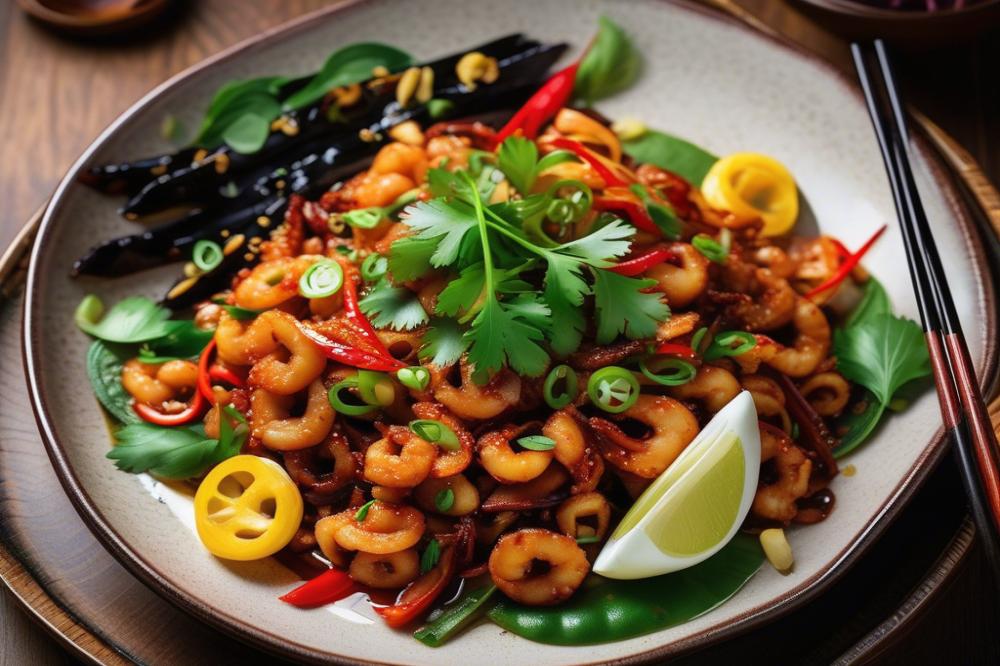
Recommendations for Selecting Fresh Squid
When it comes to preparing a delicious seafood dish, freshness is key. Look for squid with shiny skin and a firm texture. Avoid any that may appear dull or have a strong fishy odor. If possible, buy whole squid. Cleaning it yourself can enhance the flavor. The tentacles and body should be vibrant in color. This will give your stir-fry a distinctive appearance.
Adjusting Spice Levels for Personal Preferences
Korean food can be spicy, but you can adjust the heat. If you prefer a milder taste, use less gochugaru and reduce the amount of gochujang. You can always add more spice later, so start with a small amount. For spice lovers, feel free to amp it up with extra chili flakes. Taste as you cook. This way, you can create a dish tailored to your liking.
Suggestions for Side Dishes that Complement the Meal
Pairing side dishes with your squid recipe can enhance the meal. Simple banchan, like pickled radishes or kimchi, add a refreshing contrast. A bowl of steamed rice is a must. It helps balance the heat of the spicy cuisine. You can also serve stir-fried vegetables alongside. This adds texture and color, making for an appealing plate. These easy meals make for a delightful dining experience.
Variations of Ojingeo Bokkeum
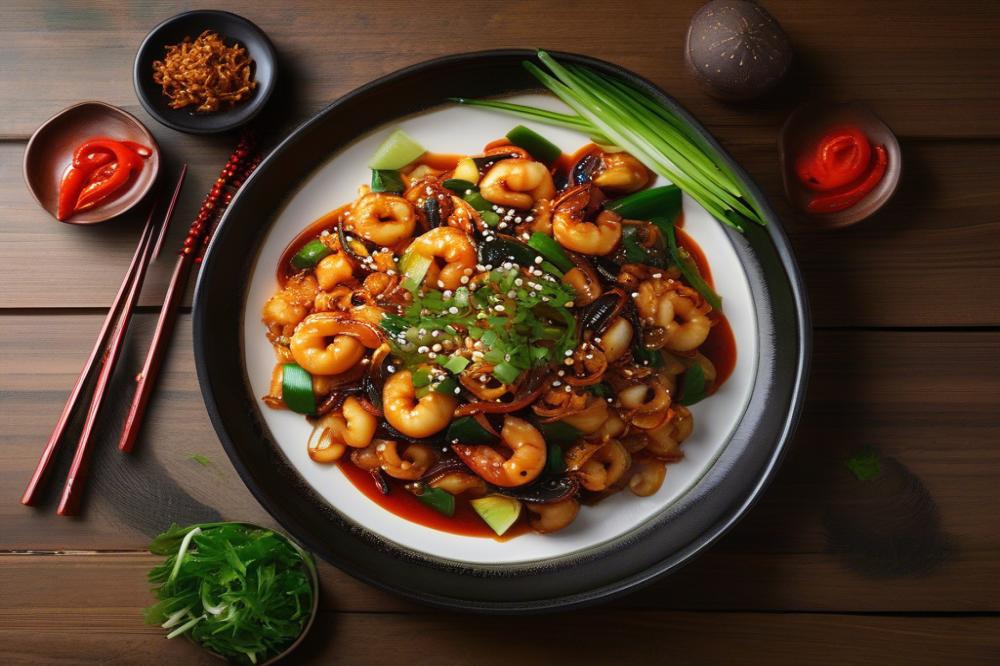
Many enjoy experimenting with different versions of Ojingeo Bokkeum. This popular Korean seafood dish can be modified in various ways to suit different tastes. Making this spicy stir-fry can be an adventure in flavors. By incorporating additional vegetables, you can bring new textures and colors to the plate.
Carrots, bell peppers, and zucchini are fantastic additions. These veggies enhance the dish while providing extra nutrients. Adding baby corn or mushrooms can also elevate the overall taste. Some people prefer to include a protein, like shrimp or tofu, for a more filling meal. This way, the squid and extra ingredients harmonize nicely, making it a delightful squid recipe.
Choosing alternative sauces can also be exciting. Instead of the classic gochujang, you might try using sriracha for an even spicier kick. Combining soy sauce with oyster sauce can offer a richer flavor profile. You can also explore using different spices like sesame oil or crushed red pepper flakes to create distinct tastes. These cooking tips can assist anyone new to Asian cooking or looking to try easy meals with a twist.
Don’t hesitate to play around with different cooking oils, too. Peanut oil or even olive oil can add their own essence to this lovely dish. Trying out new ingredients will help you discover exciting flavor combinations. With so many options available, you can easily customize this classic to fit your mood or season. The joy of preparing Ojingeo Bokkeum lies in the freedom to explore and create your own version.
Serving Suggestions and Pairing
Plating Ojingeo Bokkeum can elevate the presentation of this delicious seafood dish. Use a shallow bowl or a colorful plate to make the vibrant orange-red colors of the stir-fried squid pop. Arrange the cooked squid neatly on the plate, allowing the vegetables to frame the dish. Consider adding fresh herbs, such as green onions or sesame seeds, on top for a garnish that adds both texture and flavor.
Recommended Korean Side Dishes and Beverages
When serving this quick recipe, it’s best to have a variety of side dishes. Kimchi is a must; its spicy and tangy flavor complements the dish well. Another great option is pickled radishes, which can refresh the palate. Banchan, or small side dishes, like seasoned spinach or bean sprouts, can also enhance the meal. For beverages, you might choose traditional Korean rice wine, called makgeolli. Alternatively, a cold beer pairs nicely with spicy cuisine and adds a refreshing contrast.
Discussion of the Dish’s Place in a Traditional Korean Meal Setup
The stir-fry of squid plays a key role in many Korean meals. It is often featured as a main dish alongside steamed rice, helping to balance flavors and textures. A traditional Korean meal typically consists of several dishes, including a protein source, vegetables, and rice. This squid recipe captures the essence of Asian cooking with its bold spices and unique flavors, making it a favorite for family gatherings. Sharing food is significant in Korean culture, so serving Ojingeo Bokkeum in a communal style is a special touch that enhances the dining experience.
Final Thoughts on Ojingeo Bokkeum
This spicy stir-fried squid truly stands out as a quick and easy meal option. It combines vibrant flavors and a delightful texture, making it a wonderful choice for busy weeknights. Families can gather around the table, sharing dishes that not only satisfy hunger but also create lasting memories. The beauty of this seafood dish lies in its versatility. You can easily adjust the spice level or add more vegetables to suit personal tastes.
Don’t hesitate to get creative with the recipe. Ingredients can be swapped out based on what you have at home. Bell peppers, zucchini, or even mushrooms could add a fresh twist. Kids might enjoy helping to prepare this dish, making it a shared experience and a fun way to introduce them to cooking. Trying new variations could transform this into a family favorite.
Embracing Korean food opens up a whole new world of flavors and meals. The rich history and diverse offerings truly reflect the culture’s unique palate. Every bite tells a story, filled with passion and tradition. So, take a chance on this delicious stir-fried squid. You might just discover your new go-to recipe!

